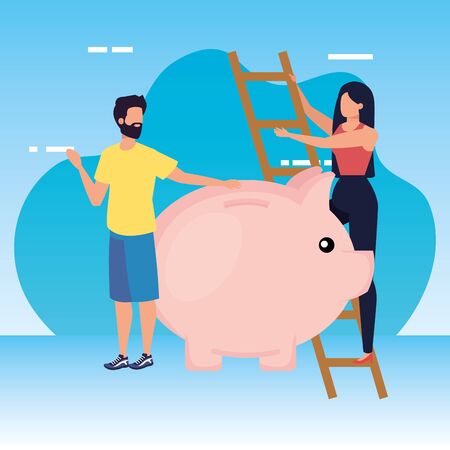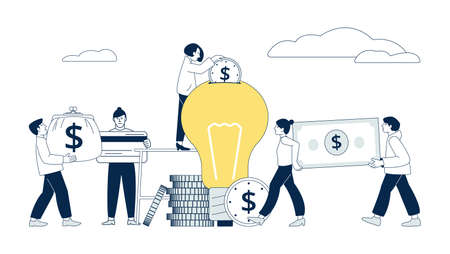1. The American Attitude Towards Failure
In the United States, failure is often seen not as a dead end, but as a critical step in the entrepreneurial journey. This perspective is deeply rooted in American culture, where taking risks and learning from mistakes are celebrated. Entrepreneurs in the US are encouraged to “fail forward,” meaning they view setbacks as opportunities to grow, adapt, and innovate. This attitude is distinctly different from how failure is perceived in many other parts of the world.
Celebrating Risk-Taking
American society values boldness and the willingness to try new things. From Silicon Valley startups to small-town businesses, taking calculated risks is considered essential for success. Investors, mentors, and even customers often respect entrepreneurs who have experienced failure because it demonstrates courage and perseverance.
Comparing Global Perspectives on Failure
| Country/Region | Attitude Toward Failure | Impact on Entrepreneurs |
|---|---|---|
| United States | Failure is seen as a learning experience; risk-taking is encouraged. | Entrepreneurs are more likely to try again after setbacks. |
| Japan | Failure can carry significant social stigma. | Entrepreneurs may avoid risks or hide mistakes. |
| Europe (general) | Cautious approach; fear of failure can be a barrier. | Startups may move more slowly or struggle to recover from failure. |
| India | Changing attitudes, but failure still often viewed negatively. | Entrepreneurs may face family and societal pressure after setbacks. |
The US Advantage: Learning from Mistakes
This positive outlook on failure gives American entrepreneurs a unique advantage. When mistakes are made, they aren’t hidden—they’re analyzed and shared openly. Stories of failed ventures turning into billion-dollar companies are common in business media, reinforcing the belief that every setback holds valuable lessons. This mindset helps create resilient business owners who are not afraid to pivot or start over when things don’t go as planned.
2. Learning from Setbacks: Real Stories of Resilient Entrepreneurs
When it comes to entrepreneurship in the US, failure isnt the end—its often just the beginning. Many American entrepreneurs have faced tough setbacks, only to bounce back stronger and smarter. Their journeys remind us that learning from failure is at the heart of building something truly great.
Turning Losses into Lessons
Let’s look at some inspiring real-life examples that show how bouncing back from failure can lead to even bigger success down the road:
| Entrepreneur | Initial Setback | Key Lesson Learned | Ultimate Success |
|---|---|---|---|
| Steve Jobs (Apple) | Fired from his own company in 1985 | Humility and the value of innovation | Returned to Apple and led it to become a tech giant |
| Sara Blakely (SPANX) | Failed law school entrance exams twice | The importance of persistence and creative thinking | Became the youngest self-made female billionaire in America |
| Howard Schultz (Starbucks) | Over 200 rejections for his coffee shop idea | Never give up on your vision | Built Starbucks into a global brand with thousands of locations |
| Arianna Huffington (HuffPost) | Rejected by 36 publishers for her second book | The power of resilience and believing in your work | Cofounded The Huffington Post, later sold for millions |
Why These Stories Matter
These stories aren’t just about famous names—they’re proof that setbacks happen to everyone, no matter how talented or driven you are. What sets successful entrepreneurs apart is their willingness to learn from mistakes, adapt quickly, and keep moving forward.
Bouncing Back: Common Themes Among US Entrepreneurs
- Growth Mindset: Seeing failures as opportunities to grow, not reasons to quit.
- Persistence: Refusing to let setbacks define them or stop their journey.
- Adaptability: Changing strategies when things don’t go as planned.
- Community Support: Leaning on mentors, friends, and networks for encouragement.
Your Turn: Embrace Your Setbacks
If you’re dreaming of starting something new or already running your own business, remember these stories. Every setback can teach you something valuable—sometimes, it’s exactly what you need to push through challenges and reach your goals.

3. Why Failing Forward Matters: Building Grit and Growth Mindset
The Power of Embracing Failure
In the US, entrepreneurship is often romanticized as a journey full of big wins. However, real success stories are usually built on a foundation of failed attempts and lessons learned. “Failing forward” means viewing each setback as a stepping stone, not a roadblock. This mindset is crucial for building grit and nurturing a growth mindset—two essential qualities for thriving in the American business landscape.
Psychological Benefits of Failing Forward
Embracing failure isn’t just about bouncing back; it actually rewires how we approach challenges. When entrepreneurs see failure as feedback rather than defeat, they unlock powerful psychological benefits:
| Benefit | Description |
|---|---|
| Resilience | The ability to recover quickly from difficulties and keep pushing forward, even when things get tough. |
| Adaptability | Learning to adjust strategies and approaches in response to new information or changing circumstances. |
| Growth Mindset | Believing that skills and intelligence can be developed through effort, learning, and persistence. |
Building Grit: The American Way
Grit is more than perseverance—it’s sticking with your goals even when progress feels slow or setbacks pile up. In the US startup culture, gritty entrepreneurs are celebrated for their ability to weather storms and keep hustling. By failing forward, founders train themselves to face rejection, uncertainty, and risk without losing motivation.
The Growth Mindset Advantage
A growth mindset is all about seeing abilities as flexible rather than fixed. When entrepreneurs adopt this mindset, they become more open to feedback, eager to learn from mistakes, and less afraid of taking risks. This attitude fuels innovation and keeps businesses moving ahead—even when the going gets rough.
Every Setback is a Setup for Success
By normalizing failure as part of the entrepreneurial process in the US, founders create an environment where it’s safe to experiment, iterate, and improve. Over time, this fosters not just stronger businesses but also stronger leaders who are better equipped for long-term success.
4. Failure-Friendly Ecosystems: Support Systems in the US
In the United States, entrepreneurship is more than just launching a business—its about taking risks and learning from setbacks. What makes the US unique is its strong support systems that help startups bounce back from failure and try again. These “failure-friendly” ecosystems include incubators, investors, and mentorship programs that encourage risk-taking and see failure as part of the journey.
How American Networks Support Entrepreneurs
Across the country, there are networks designed to help founders not just survive failure but thrive because of it. Here’s how some key players support resilient entrepreneurship:
| Support System | How It Helps with Failure | Examples |
|---|---|---|
| Incubators & Accelerators | Offer resources, guidance, and connections; provide a safe space to test ideas and pivot after setbacks. | Y Combinator, Techstars, 500 Startups |
| Investors (Angels & VCs) | Value founders who learn from past failures; often invest in people with previous startup experience—even if those startups failed. | Sequoia Capital, AngelList, Andreessen Horowitz |
| Mentorship Programs | Pair new entrepreneurs with experienced mentors who openly discuss their own failures and lessons learned. | SCORE, Founder Institute, local Small Business Development Centers (SBDCs) |
| Entrepreneurship Communities | Create events and meetups where sharing stories of failure is normal and even celebrated. | Startup Grind, Meetup groups, local coworking spaces |
The Culture of “Fail Fast, Learn Faster”
The phrase “fail fast, learn faster” captures the American approach to innovation. In these ecosystems, making mistakes isn’t seen as shameful—it’s expected. Many successful founders have failed one or more times before hitting it big. By normalizing conversations about what went wrong and what could be improved, these networks build trust and resilience among entrepreneurs.
Real-World Examples
- Y Combinator alumni: Many YC graduates share their failed startup stories during Demo Day talks to inspire newcomers not to give up.
- SCORE mentors: Retired business owners often highlight their biggest mistakes so mentees can avoid common pitfalls.
- Techstars programs: Teams are encouraged to pivot quickly when an idea doesn’t work out—sometimes even within the same program cycle.
The Power of Community Support
No founder succeeds alone. The American ecosystem is filled with people ready to offer advice after a tough break, investors willing to fund second chances, and communities that recognize resilience as a badge of honor. This collective mindset helps entrepreneurs view failure as fuel for future success instead of a dead end.
5. Turning Losses Into Launchpads: Practical Tips for Bouncing Back
Embracing Failure as a Stepping Stone
In the US, failure isn’t just accepted—it’s seen as an essential part of the entrepreneurial journey. Instead of treating setbacks as dead ends, successful entrepreneurs use them as springboards for growth and innovation. Here’s how you can turn your losses into launchpads and keep moving forward.
How to Analyze Failures Effectively
Every failed venture contains valuable lessons. To get the most out of your experience, follow these steps:
| Step | Action | Outcome |
|---|---|---|
| 1. Reflect Honestly | Take time to review what went wrong without blaming others or making excuses. | Clear understanding of the root causes. |
| 2. Seek Feedback | Ask your team, mentors, or customers for their honest perspectives. | Diverse insights on overlooked issues. |
| 3. Identify Patterns | Notice if similar problems have occurred before. | Avoid repeating mistakes in the future. |
| 4. Document Lessons Learned | Write down key takeaways for yourself and your team. | A resource for future projects. |
Accepting Failure Without Losing Momentum
- Don’t Take It Personally: Remember, even iconic US entrepreneurs like Steve Jobs and Oprah Winfrey faced major setbacks before finding success. Separate your self-worth from business outcomes.
- Share Your Story: Talking openly about failures with peers builds trust and encourages a culture of learning—not blame—within your company.
- Create Space for Experimentation: Allow room in your business for trying new ideas, knowing not every experiment will work out.
Leveraging Failures for Future Wins
- Pivot With Purpose: Use what you’ve learned to adjust your strategy or product offerings. Many US startups have succeeded by pivoting after early failures (think Twitter or Slack).
- Cultivate Resilience: Develop habits like regular journaling or mindfulness exercises to help bounce back mentally after tough times.
- Set Small, Achievable Goals: Break big challenges into manageable tasks so you can rebuild confidence with each success.
- Celebrate Progress: Recognize and reward your team’s ability to adapt and persevere, not just their wins.
Bounce Back Checklist
| Action Item | Status (✔/✘) |
|---|---|
| I’ve reflected honestly on my setback. | |
| I’ve gathered feedback from others. | |
| I’ve documented what I learned. | |
| I’ve shared my story with my team or peers. | |
| I’ve made a plan to pivot or improve based on these lessons. |
Your Next Steps Start Now
No entrepreneur succeeds without stumbling along the way. By analyzing, accepting, and leveraging your failures, you’ll build the resilience and creativity needed to thrive in the fast-paced world of American entrepreneurship. Remember: every loss is just another launchpad for your next big idea!


